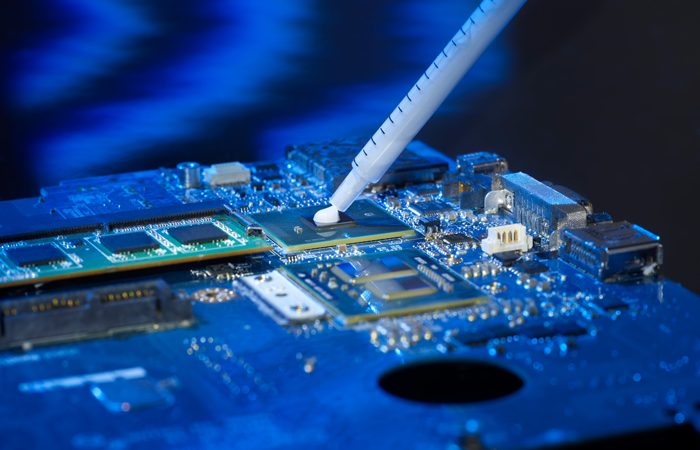In the world of electronics and mechanical engineering, managing heat effectively is crucial for reliability and performance.
Contact us
Sending Email...
Contact person/s

Jonas Carlsson
Director Global Sales
+46 708 12 99 95

STANDARD PRODUCT
Compatherm® Thermal Paste
Compatherm Paste, a thermally conductive paste, provides thermal conductivity, bridging the gap between components and cooling solutions to ensure devices operate within safe temperature limits.
COMPATHERM® PASTE
The Significance of Thermal Paste Conductivity
Falling into the thin-bond-line category of Thermal Interface Materials (TIMs), it is engineered to form the thinnest possible film between the heat source and the heat sink. This minimal thermal resistance is key to its effectiveness. The high thermal conductivity of the paste ensures efficient heat dissipation, crucial for maintaining the integrity and longevity of electronic components.


Compatherm® Thermal Paste Benefits
Thermal paste with high performance and ultra-thin bond line
Maximizes heat dissipation with minimal thermal resistance, leveraging an ultra-thin bond line for superior thermal management in high-power devices.
Precision bond lines down to tenths of microns
Enables exceptionally thin bond lines, down to tenths of microns, for precise thermal control in densely packed electronic configurations.
Versatile dispensability and printability
Facilitates easy application via dispensing or silk/stencil screen printing, ensuring consistent, high-quality thermal interface across various manufacturing processes.
Stable composition without dry-out
Maintains consistent thermal conductivity and performance over time, with a stable composition that resists drying out, ensuring long-term reliability.

compatherm® paste material matrix & datasheets
| Test standard | Unit | 9532 | 9543 | 9550 | ||||
| Base matrix | Silicone |
Silicone | Silicone | |||||
| Thermally conductive filler | Ceramic | Ceramic, Al | Ceramic, AI | |||||
| Color | Visual | White | Gray | Gray | ||||
| Thermal Conductivity | ISO 22007-2 mod | W/(m-K) | 2.5 | 4.3 | 5.0 | |||
| Viscosity | Brookfield 10rpm | cP |
110,000 | 250,000 | 200,000 | |||
| Density | ASTM D792 | g/cm^3 |
2.68 | 2.3 | 2.20 | |||
| Dielectric Breakdown Voltage | ASTM D149 | VAC/mm |
4 000 | 400 | 1 000 | |||
| Volatile Content | ASTM E595 (mod.) | % |
0.3 | 0.3 | 0.15 | |||
| BLT (Bond Line Thickness) | um | 50 | 20 | 20 | ||||
| Shelf life | month | 12 | 12 | 12 | ||||
You might also be interested in
CAREERS
Careers in Sweden
We are a responsible employer that supports its employees and provides expert services for our customers. Nolato has strong core values, in which both professional development and personal wellbeing are key drivers for a successful company.
STORIES
Enhancing optical module performance
Nolato Materials, specialize in delivering cutting-edge EMC and thermal solutions for optical module manufacturers, helping them meet the growing demands for data, cloud, and 5G services.
STORIES
Cool running with silicone-based thermal interface material
Some issues have been raised regarding silicone in electronics. Consequently, in spite of their often-disadvantageous aging, thermal stability, and stiffness properties, PLP TIM products with non-silicone-based matrices have been gaining in popularity. This article by the R&D department of Nolato Silikonteknik addresses these concerns and underlines the benefits offered by silicone: